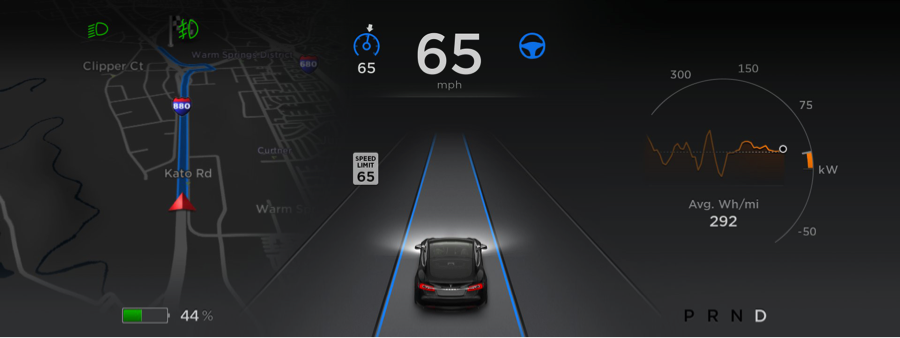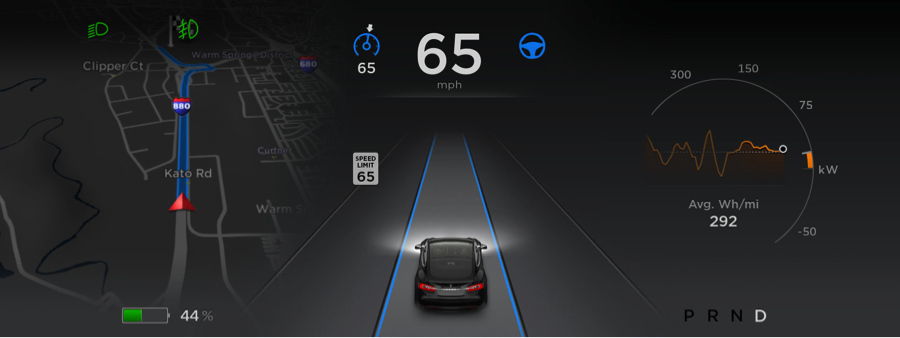
I own a Tesla Model S and Model X with Autopilot. Best cars I've ever had.
So when the first death with Tesla's Autopilot occurred, was I pissed?
At Tesla? No, not at all.
I was pissed at the media.
This is a blog about the facts, and the Media's "negativity bias."
Here are the facts:
Prior to this first unfortunate death (my sincerest condolences to the family), Tesla's Autopilot had successfully, safely driven owners and their families 130 million miles.
Among all vehicles in the U.S., there is a fatality every 94 million miles.
Worldwide, there is a fatality approximately every 60 million miles.
As a frequent user of Autopilot, I can tell you, it makes me a safer driver, as it keeps me in the lanes when I'm groggy or distracted.
So where are the front-page media stories about how Autopilot "saves lives"?
Let's dive in...
P.S. Send any tips to our team by clicking here, and send your friends and family to this link to subscribe to Abundance Insider.
The Media's Negativity Bias: Reality vs. Spin
The press has a bias towards negativity.
Because we pay 10x more attention to negative news vs. positive news, negative headlines sell newspapers and attract eyeballs for their advertisers.
As a result, stories are many times misconstrued and exaggerated.
Technology companies often suffer the worst of this misrepresentation, as technology, by nature, can be complicated, difficult to understand and frequently disrupts the establishment.
After Tesla released a letter detailing the conditions around the first fatal Autopilot crash, thousands of angry articles began to spread across the Internet – literally a feeding frenzy of articles raising concerns for the future of driverless cars, and most lambasted Tesla for their efforts in releasing Autopilot to the public before it was ready, insisting that this incident should force us to "reassess" driverless cars … here are a few high-profile examples:
- The New York Times ran a front-page story quoting experts who said that the accident was “a wake-up call” for the rapidly burgeoning self-driving industry.
- Fortune scathed Musk and Tesla for misleading shareholders and not sharing the crash news sooner.
- A local Florida ABC News affiliate said the crash was “raising safety concerns for everyone in Florida.”
Wow… really, everyone?
As Elon succinctly put in a tweet to Fortune magazine, the "BS article increased your advertising revenue. Just wasn't material to TSLA, as shown by market."
Let's Look at the Data…
In the Tesla incident, many of the articles described Tesla's Autopilot as "deadly" or "dangerous."
The reality is, when you look at the numbers, driving with Tesla's Autopilot on is actually SAFER than driving without it, or in a car that doesn't have it.
- As Tesla reports, and as I mentioned earlier, this is the first known fatality in just over 130 million miles where Autopilot was activated.
- Another pair of statistics that bear repeating: Among all vehicles in the U.S., there is a fatality every 94 million miles. Worldwide, there is a fatality approximately every 60 million miles.
- Every day, hundreds of people are killed or seriously injured in their cars across the country… some 33,000 deaths per year in America, and ~1.25 million worldwide.
As Elon also tweeted to the press: "If you care about auto deaths as material to stock prices, why no articles about 1M+/year deaths from other auto companies?"
The only reason the Tesla Autopilot death story is newsworthy is because it involves a new technology (Artificial Intelligence/Robotics/Autonomous Driving) – a nice scapegoat for media to blame…
Oh yeah, and besides the fact that Autopilot makes driving safer in general, it should be mentioned that the Model S and Model X actually have the lowest probability of injury of any car ever tested by NHTSA (the National Highway Traffic Safety Administration).
How Does Autopilot Work?
Tesla's Autopilot was a software upgrade to the Model S that allows the vehicle to use its unique combination of cameras, radar, ultrasonic sensors and data to automatically steer down the highway, change lanes, and adjust speed in response to traffic.

The dashboard inside a Tesla vehicle (Source: Tesla Motors)
The Model S Autopilot uses 12 sensors on the bottom of the car — six in the front and six in the back.
It uses a front-facing camera next to the rear view mirror. It also has a radar system under the nose of the car that senses what's in front of the car.
And critically, all of the data processed by these sensors is fed back to a central hub so that all Tesla cars can learn from it, called Fleet learning.
The data is aggregated (anonymously) into maps that let the central Autopilot system see the precise paths that cars take, and don't take.
"Each driver is effectively an expert trainer in how Autopilot should work," Elon explained, and the network of Tesla vehicles is constantly learning more about where cars do and don't actually travel.
Thus, the system's capabilities "will keep improving over time, both from the standpoint of all the expert drivers ... training it," he said, "but also in terms of the software functionality" -- which will add new features.
This is so important I need to restate it: With every single mile driven, the cars get safer and safer.
As Tesla reports, "As more real-world miles accumulate and the software logic accounts for increasingly rare events, the probability of injury will keep decreasing. Autopilot is getting better all the time, but it is not perfect and still requires the driver to remain alert. Nonetheless, when used in conjunction with driver oversight, the data is unequivocal that Autopilot reduces driver workload and results in a statistically significant improvement in safety when compared to purely manual driving."
Implications for Artificial Intelligence & Robotics – This Isn't the First:
The reason this pisses me off, besides the aforementioned, is that technology actually makes our lives better on so many different dimensions, but we fear what we don't understand.
Genetically Modified Organisms (GMO) technology, for example, has allowed us to feed tens of millions of people and have never caused a death, yet an uneducated public reacts negatively to what they don't understand.
In the near future, as we see Artificial Intelligence, robotics, synthetic genomics and other exponential tech entering further and deeper into our lives, it will be responsible for raising everyone's standards of living, making our lives easier, saving lives…
But as we see the first deaths occur, much of society's gut reaction is to reject the technology, rule it out, or dismiss it as 'not working' or dangerous.
While some make efforts to shut it down, rarely do regulatory bodies make an effort to measure the HARM done by shutting down the tech.
Sure, we could shut down efforts for autonomous vehicles, and in so doing continue a 33,000 annual death rate per year… but that, IMHO, would be immoral and irresponsible. Or we can embrace the technology and drive the death rate towards zero.
Technology is hard, but it's worth it.
It's likely in 20 years that we'll look back on those days when we gave a 17-year-old kid with less than 20 hours of experience control of a 5,000-lb. vehicle speeding along at 65 MPH as a somewhat insane practice.
I'll take an ever improving machine learning algorithm over kid with a learners' permit any day.
Also read: TOP 50 MOON SHOTS
WHAT IS ABUNDANCE INSIDER?
This email is a briefing of the week's most compelling, abundance-enabling tech developments, curated by Marissa Brassfield in preparation for Abundance 360. Read more about A360 below.
WANT MORE CONVERSATIONS LIKE THIS? - JOIN ME
At Abundance 360, Peter's 360-person executive mastermind, we teach the metatrends, implications and unfair advantages for entrepreneurs enabled by breakthroughs like those featured above. We're looking for CEOs and entrepreneurs who want to change the world. The program is highly selective. Apply now for Abundance360 Summit if you'd like to develop an Abundance mindset.
Know someone who would benefit from getting Abundance Insider? Send them to this link to sign up.
P.S. I've just released a podcast with my dear friend Dan Sullivan called Exponential Wisdom. Our conversations focus on the exponential technologies creating abundance, the human-technology collaboration, and entrepreneurship. Head here to listen and subscribe.






